Chromag Lowdown
Wheel Size: 29’’
Travel: 158 mm rear / 170 mm front
Geometry Highlights:
- Sizes offered: S, M, M/L, L, XL
- Headtube angle: 63.5°
- Seat tube angle: 79°
- Reach: 490 mm (size M/L)
- Chainstay length: 440 mm
Frame Material: Steel front triangle; aluminum rear triangle
Price:
- Frame: $3,000 w/ RockShox Super Deluxe shock
- Complete bikes: $5,265 to $6,850 USD
Blister’s Measured Weight (Lowdown G2, size M/L): 37.65 lb / 17.08 kg
Test Locations: Washington
Reviewer: 6’, 170 lbs / 183 cm, 77.1 kg
Test Duration: 4 months
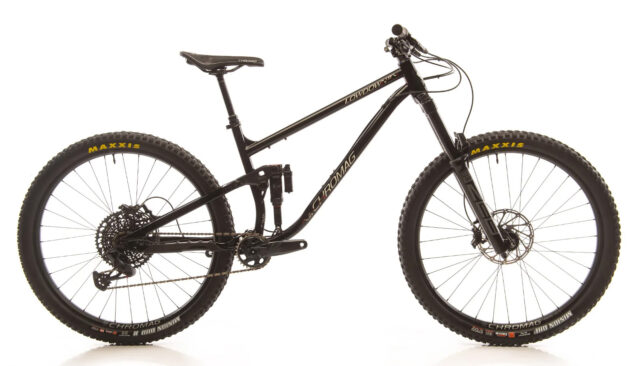
Intro
The Chromag Darco was one of my favorite bikes that I reviewed last year, but it’s an admittedly niche offering — a hyper-aggressive, descending-oriented, 120mm-travel Trail bike. The Darco’s unusual combination of traits is, in many ways, precisely what I loved about it, but it also left me very curious to see what its bigger sibling, the Lowdown, would bring to the table.
Having now spent a lot of time on the Lowdown, I can say that it does bear a substantial resemblance to a longer-travel version of the Darco — but also differs in some ways that surprised me.
[For the full rundown on the specs and geometry of the Lowdown, check out our First Look.]
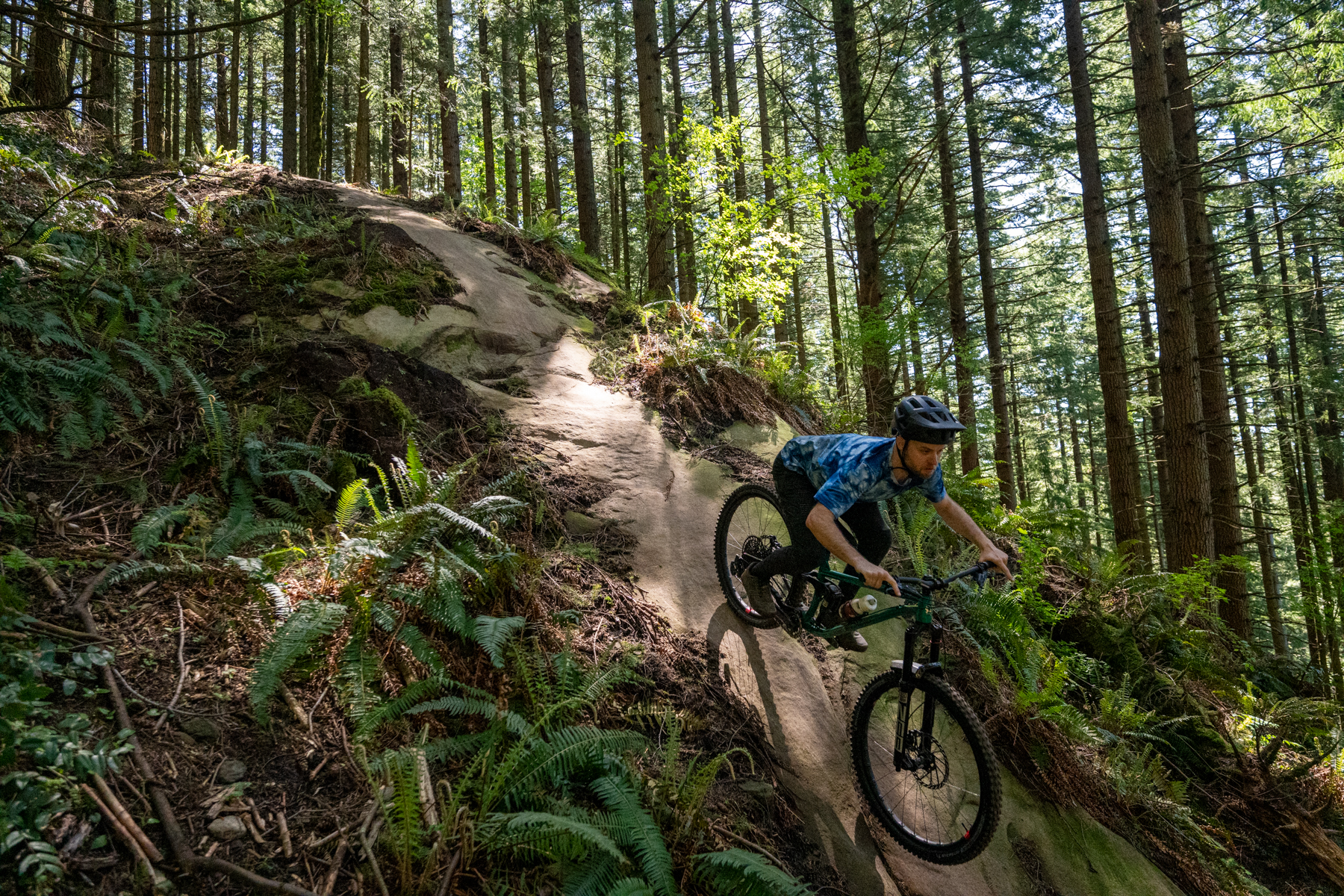
Fit & Sizing
David Golay (6’, 170 lb / 183 cm, 77.1 kg): Chromag’s recommended sizing chart puts me near the top end of the band for the M/L Lowdown and near the bottom of the range for the Large frame. Having gotten along well with the M/L Darco (after some cockpit tweaks — see our Full Review for more on that), I opted for the same M/L size on the Lowdown, and think that was the right call.
I’ve recently been on a number of other bikes where I was potentially on the brink between two sizes, but the Lowdown’s effective top tube length / seated pedaling position wouldn’t be the thing to hold me back from sizing up. Its quite-steep seat tube (79° effective) produces a fairly short seated cockpit relative to the 490 mm reach on the M/L frame that I rode, and I’m confident that I could handle a roomier fit there. (Not that I wanted it, particularly; the M/L Lowdown is on the more compact side of my preferred range for effective top tube / seated pedaling position, but still in a range where I was plenty comfortable on it.)
So I think I could ride the size Large Lowdown, too, but I just didn’t feel the need to make the M/L longer and more stable (most of the time). As we’ll get into more in a minute, it’s already a pretty composed, hard-charging bike, and I got along quite well with the fit and handling of the M/L.
If anything stands out about the fit of the M/L Lowdown, it’s that its stack height is fairly low (625 mm on our M/L review bike). I eventually swapped on a slightly higher-rise bar / stem package (30mm-rise bar, plus a stem with a little rise); this was both to get the front end a touch higher and because I prefer the steering feel of a slightly longer stem than the stock 35 mm stem, but that got me into a good place.
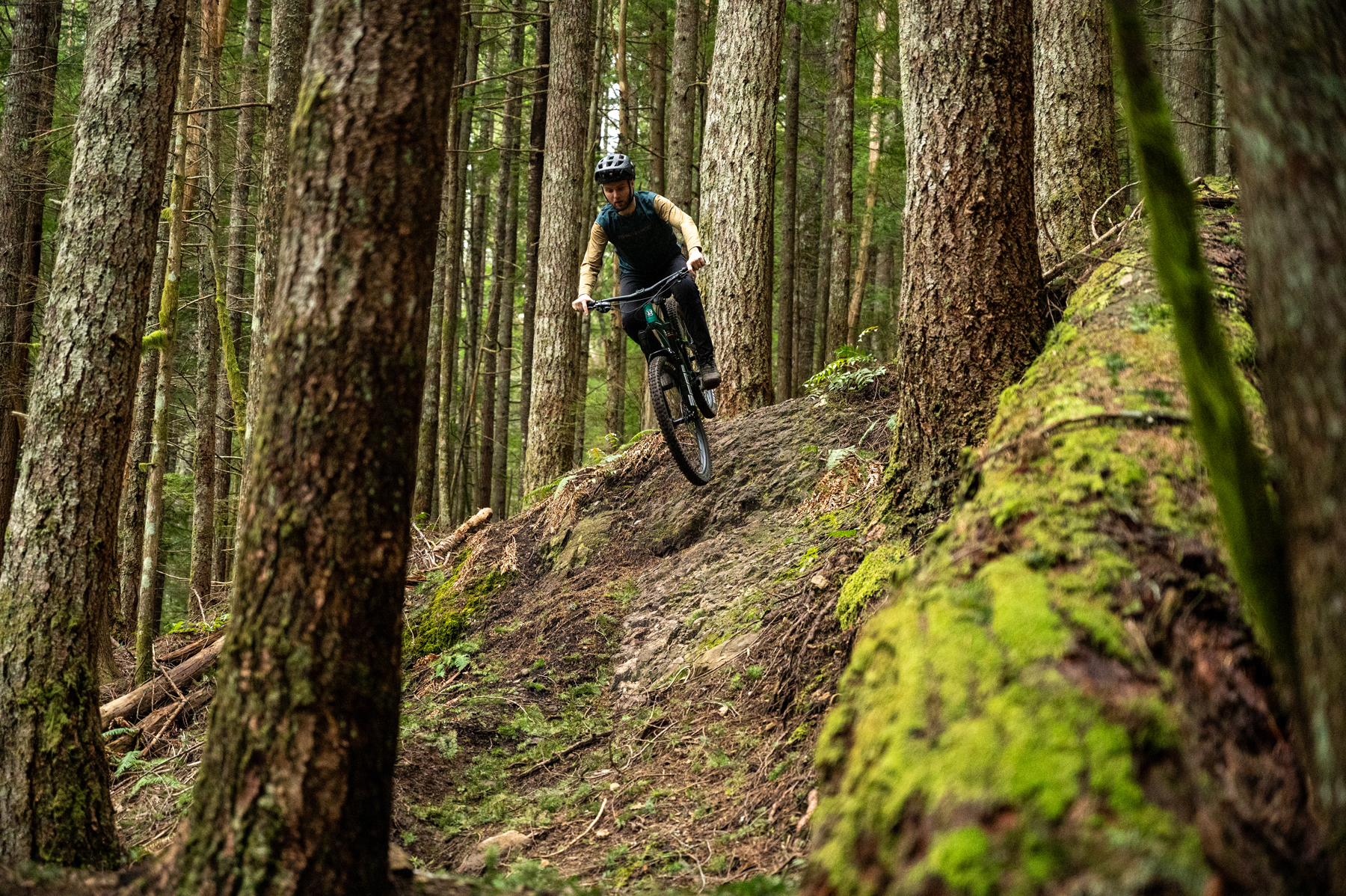
Despite nearly identical fit numbers to the Darco, the Lowdown’s stack doesn’t feel as emphatically short. I think it’s largely because the Lowdown’s more evenly matched travel numbers (158 mm rear / 170 mm front vs. the Darco’s 120 mm rear / 150 mm front) mean that the Lowdown just ends up running more rear sag relative to the front, and thus ends up with a taller (or less low) front end.
Climbing
The Lowdown’s climbing manners are pretty well in line with modern norms for a burly Enduro bike. The Lowdown’s steep seat tube angle produces an upright pedaling position that’s more ideally suited to grinding up big, consistent climbs to reach equally big descents than it is tailored for more varied, rolling terrain — appropriately so, given the intentions of the Lowdown, and how it performs on the way back down.
The Lowdown’s suspension isn’t as ruthlessly efficient as the snappiest-pedaling bikes in its class, but in trade, it maintains very good traction under power, and I wouldn’t characterize it as being inefficient, either — more just middle-of-the-road for this sort of bike. The climb switch on the rear shock is there if you want it, but I mostly didn’t feel the need. As per usual for bikes in this class, the Lowdown doesn’t feel super snappy if you’re trying to really push the pace and sprint up most climbs. But it does a respectable job of grinding its way to the top.
Overall, the Lowdown’s climbing performance feels best suited to areas (like Chromag’s hometown of Whistler) that feature a lot of long, consistently steep climbs and less rolling, varied terrain, but still with a mix of smoother fire roads and rougher, more technical climbs where traction is at a premium. There are better options if you want a bike that’s really at home in undulating terrain with a lot of short, punchy climbs and quick descents, but the Lowdown is plainly positioned as a more winch-and-plummet sort of bike. Given that intended use, it’s a solid climber.
Descending
Chromag calls the Lowdown a “long travel bruiser” and that description is pretty apt. It’s a bike that, first and foremost, wants to descend steep, technical trails at speed — and it does so very well, at least for folks with the right preferences.
Let’s tease out what those are. For starters, the Lowdown has a moderate preference for being ridden from a somewhat forward stance. It’s not as demanding of staying very forward on the bike as some other options in its class (check out our Deep Dive on the Lowdown for more of those comparisons), but the Lowdown wouldn’t be my first choice for someone who specifically wants to ride very upright and centered, or who typically has trouble keeping their front wheel / tire weighted.
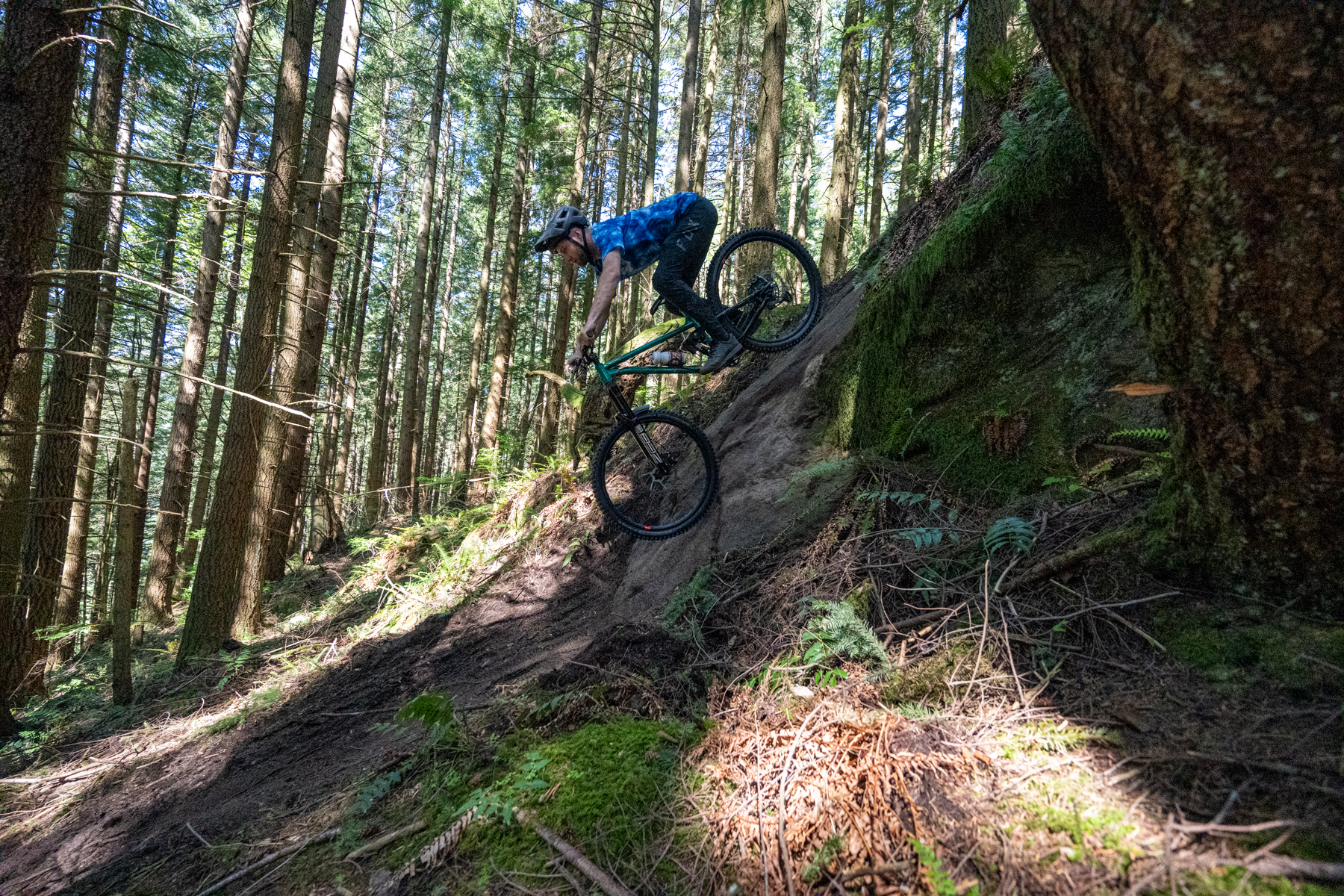
The Lowdown is also going to work best for folks who prefer to take a more dynamic, active approach than many of the other more composed, aggressive descending bikes in its class. A lot of the bikes that favor that sort of active, precise approach get there by being on the more nimble, sharp-handling end of the spectrum for a big Enduro bike, but the Lowdown is quite stable at speed, fairly composed and planted in its suspension performance, and more adept at soaking up whatever comes its way than a lot of the more nimble, lively takes on a longer-travel Enduro bike out there.
Mostly, the Lowdown just wants a good bit of speed and aggression to come alive. At lower speeds and on flatter trails it can feel sluggish and not especially engaging. It’s not a bike that’s super quick to build speed by pumping through terrain features on flatter trails, and in slower, flatter sections of trail, getting light on the Lowdown and lofting it over holes and rough bits takes more exaggerated movements and a bit more effort than some other more lively, pop-y sorts of Enduro bikes.
But once you start really moving, the Lowdown delivers a compelling combination of being quite composed and confidence-inspiring, while being more agile and maneuverable than its lower speed handling might suggest. With a little speed and some downward pitch to the trail, the Lowdown’s low-speed sluggishness melts away and it really starts to come into its own.
That duality of its handling is one of the things that stands out to me the most about the Lowdown — and is one of the things that I like the most about it. There are plenty of super stable, planted Enduro bikes that need some speed and aggression to come into their element, but those sorts of bikes tend to still feel like big, blunt objects that just want to run things over once the pace picks up. And there are nimbler, sharper-handling bikes that are more engaging at lower speeds while still being able to be pushed quite hard, but they generally need to be ridden fairly precisely to get there.
The way that the Lowdown manages to be fairly maneuverable once it’s up to speed, while still also being quite adept at just smashing its way through rough bits when called upon is pretty special. And while its handling is a big part of the story there, the Lowdown’s suspension performance and overall feel of the chassis play a role, too. The Lowdown does an excellent job of feeling smooth and comfortable, particularly in how it mutes out smaller feedback and trail chatter, while still offering good support from the suspension, and without feeling particularly flexy or imprecise in how it responds to rider input.
We’ve reviewed a lot of steel full suspension frames over the last couple of years — they’re having a definite resurgence of late — and that smooth, quiet ride feel is something of a consistent throughline with them, but to a widely varying degree. It’s possible to make a steel frame (or front triangle) pretty stiff, as with the Reeb Steezl; at the other end of the spectrum you’ve got very compliant-feeling frames like the Starling Murmur. The Lowdown’s frame (which, again, uses a steel front triangle and an aluminum rear end) feels fairly stiff overall while being a bit more muted and transmitting a little less feedback to the rider than most modern carbon fiber frames.
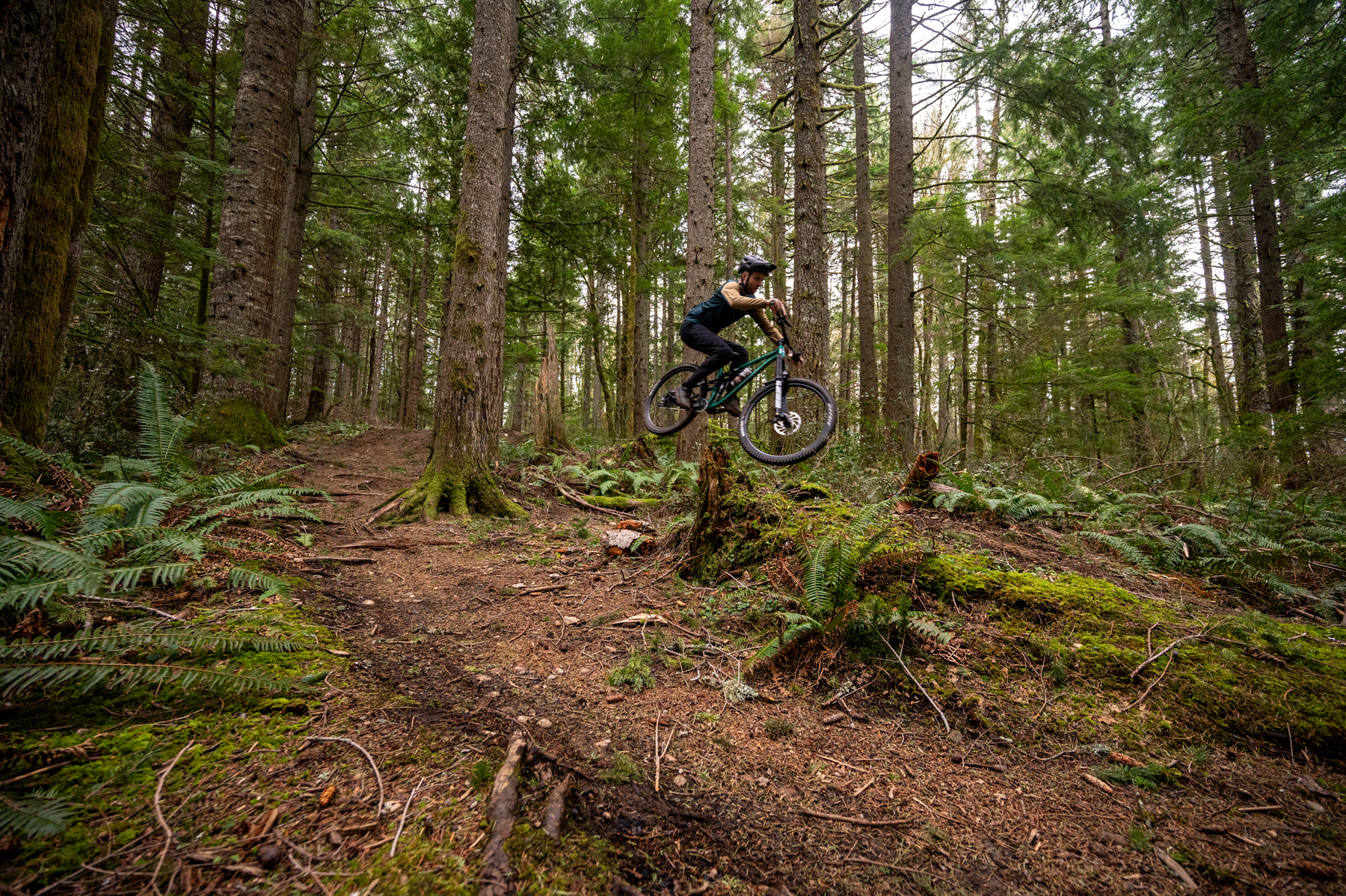
That’s a nice balance, given the intentions of the Lowdown and what it does well. The Lowdown frame still feels reasonably stiff and direct in how it responds to rider input and doesn’t feel vague in the way that notably flexy frames can, particularly under hard cornering. It’s just a little smoother and more damped-feeling than most carbon frames through smaller high-frequency chatter in particular. And while the Lowdown’s suspension feels generally well sorted, I think that feel is largely down to the ride quality of the frame itself.
To be honest, there’s not a ton that specifically stands out about the suspension performance of the Lowdown, for good or bad — but I don’t mean that as a critique at all. Kind of the opposite, in fact. The Lowdown’s suspension just feels nicely balanced, easy to set up, and generally in the middle of the spectrum on most specific attributes, rather than doing anything way off in left field. It’s consistent, predictable, and fits nicely with the overall character of the bike. The Lowdown’s fit and handling just feel like a much bigger story when it comes to describing its overall performance.
The Build
The Lowdown G2 build that I tested is well thought out, and generally a good value (especially at the sale price of $5,265 that it’s going for at the time of writing). Pairing Ultimate-tier RockShox suspension (ZEB and SuperDeluxe) with a SRAM GX mechanical drivetrain and Code RSC brakes is a great bang-for-buck combo, the Chromag branded wheels are solid (if a little on the soft-flexing end of the spectrum), and so on.
I did swap in a longer travel dropper post over the 175 mm RockShox Reverb that came stock for most of my time on the Lowdown, along with the aforementioned cockpit tweaks, but that’s stuff I end up doing on a lot of review bikes. I would have had enough room to clear the 200 mm stroke version of the Reverb at my ~785 mm seat height (center of the bottom bracket to the top of the seat) and wouldn’t have felt any need to go longer had that version come stock, but given that I’m at the top end of Chromag’s recommended sizing for the M/L frame that I rode, I get why Chromag opted for the 175 mm one here.

I’m very glad to see Chromag putting Maxxis’ DoubleDown casings on both ends of the Lowdown — it feels like I’ve been complaining about an awful lot of Enduro bikes coming with too-wimpy tires (at least in my opinion) of late, but I’ve got no such gripes here. The MaxxGrip DHR II rear tire doesn’t roll super quickly, and I swapped it out for a portion of my testing (1) to get a more direct A/B comparison of the Lowdown against a few other bikes I had on hand at the time and (2) to use the Lowdown as a test platform for some of Michelin’s new Enduro tires but I would have been 100% happy just running the stock setup if it were my personal bike.
The Lowdown frame also seems quite well-built and beefy. The pivot hardware is solid, the frame protection effective, and everything stayed tight and quiet throughout my time with the Lowdown. I’d love it if Chromag just kept the brake line fully external rather than running it through the chainstay for a few inches, and the seatpost insertion could be a little deeper (though I could run a OneUp V2 post shimmed down to 220 mm stroke just fine, which is plenty for my taste). But I’m just nitpicking there. The Lowdown is a well-built, well-spec’d bike.
Who’s It For?
Chromag’s hometown of Whistler, BC features no shortage of long, steep descents, and the Lowdown is a bike for folks who have access to that sort of terrain and want to ride it at pace. It’s a game-on bike that wants some pitch, speed, and an aggressive touch to come alive, but in its element, the Lowdown delivers a combination of very good stability and composure, solid maneuverability, and a smooth, comfortable ride that’s not quite like anything else I’ve ridden to date. Folks who prefer a taller cockpit and a more centered, upright body position might not click with the Lowdown as readily, but it’s not wildly demanding of a forward stance, either. If the sort of body positioning and riding approach that the Lowdown favors works for you, it’s a pretty special bike.
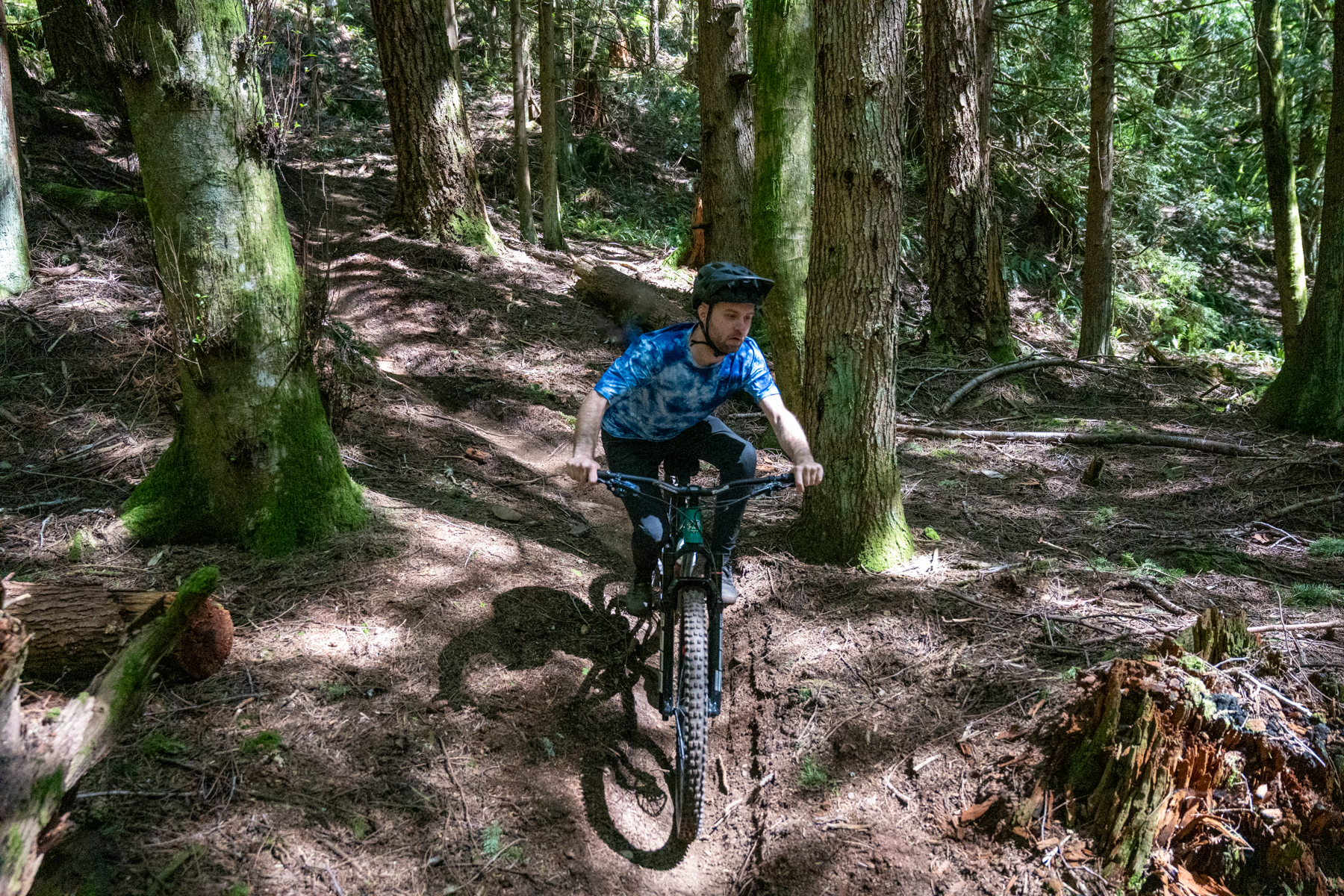
Bottom Line
Modern Enduro bikes span a big spectrum from models that feel more like long-travel Trail bikes to full-on mini-DH sleds, and the Chromag Lowdown has carved out a nice spot for itself on that continuum. The Lowdown is a relatively game-on bike that wants to be pushed hard and descend burly trails at speed, but offers a combination of stability and composure paired with surprising agility once you get it up to pace that isn’t quite like anything else I’ve ridden to date, and is likely to really click for the right folks.
Deep Dive Comparisons
BLISTER+ members and those who purchase our Digital Access Pass can check out our Deep Dive comparisons linked below. Get our Digital Access Pass to view all our Deep Dives and Flash Reviews, or become a BLISTER+ member today to get access to that and a LOT more, including the best worldwide Outdoor Injury Insurance, exclusive deals and discounts on skis, personalized gear recommendations from us, and much more.

Deep Dive: Chromag Lowdown
We compare the Chromag Lowdown to the Nicolai G1, Yeti SB160, Rocky Mountain Altitude, Chromag Darco, Pivot Firebird, Santa Cruz Megatower, Orbea Rallon, Norco Range, Contra MC, Trek Slash, Ibis HD6, Nicolai Nucleon 16, RAAW Madonna, Reeb Steezl, Starling Murmur Enduro, and Cotic RocketMAX.
Blister’s Flash Reviews and Deep Dives are accessible to those who purchase one of our paid subscriptions
To get our comprehensive Deep Dives and our initial, unfiltered reports on new gear, become a member and receive many other services, deals, and discounts.
If you’re already an active member, please log in.
(If you’re already logged in and a member in good standing and seeing this message in error, please refresh this page in your browser.)

Where is that sweet looking slab ride in the first pic?